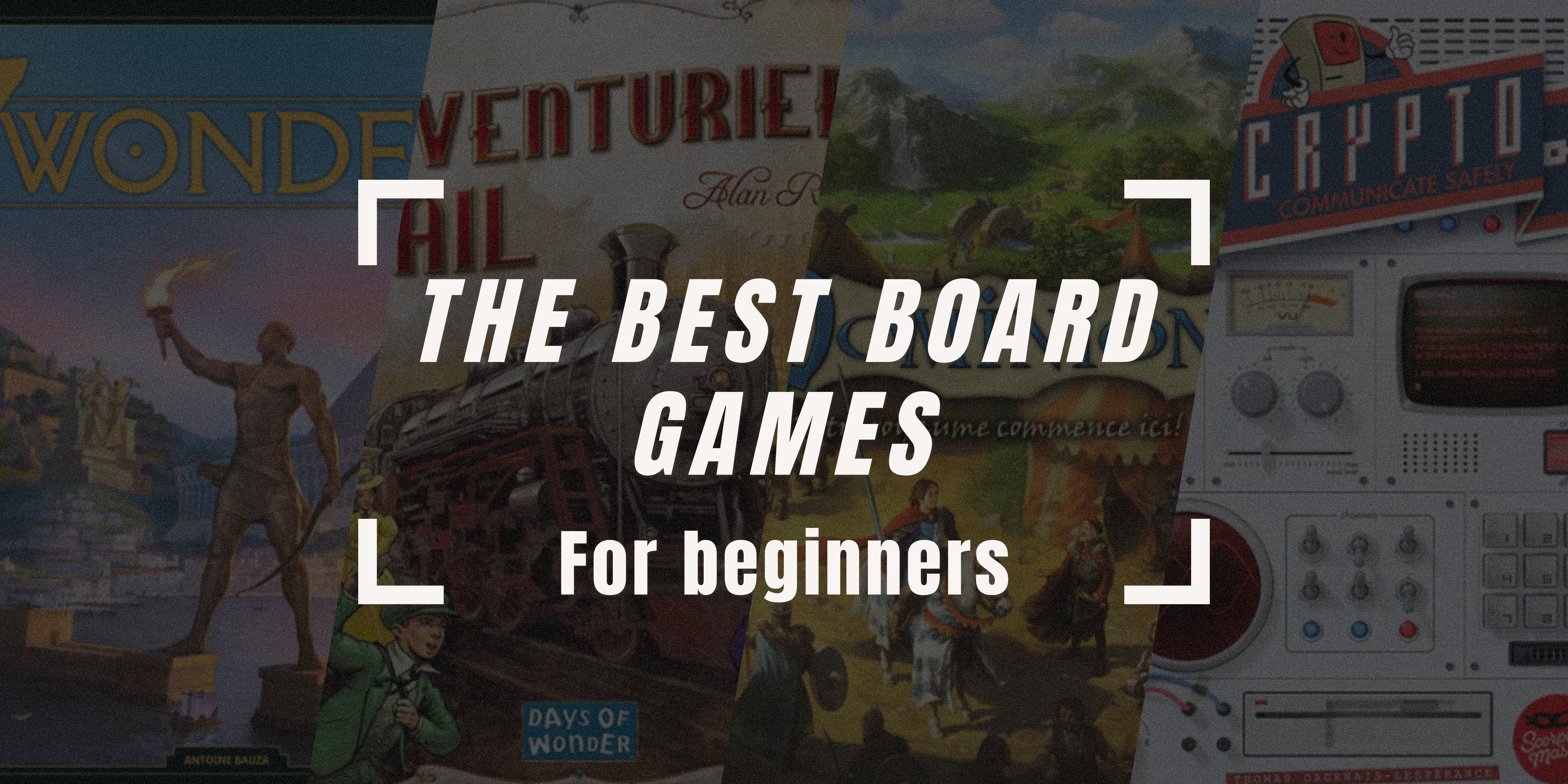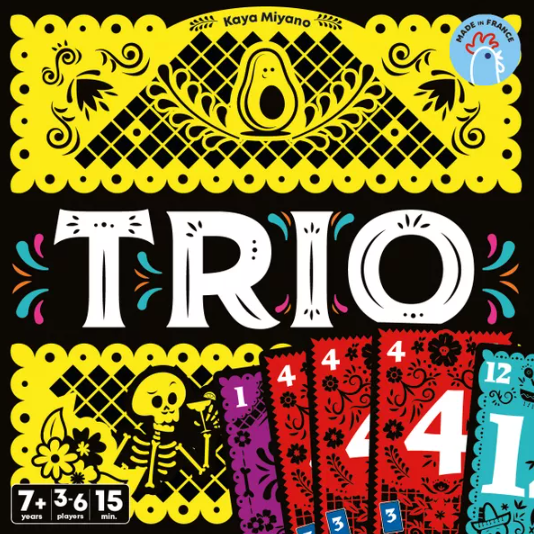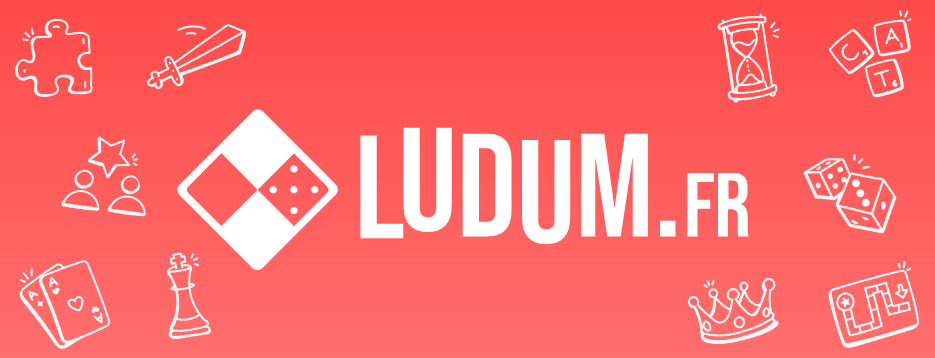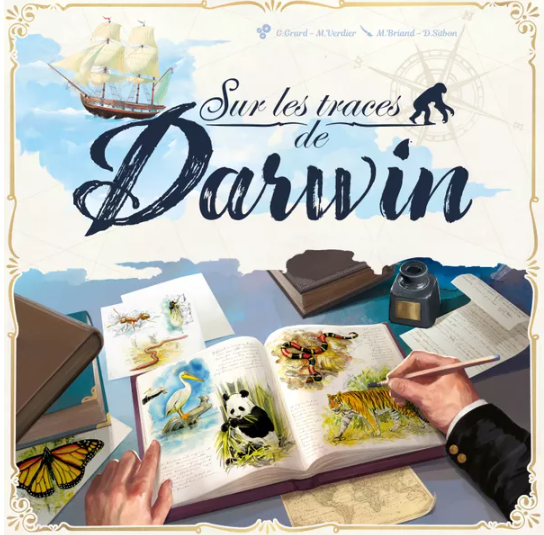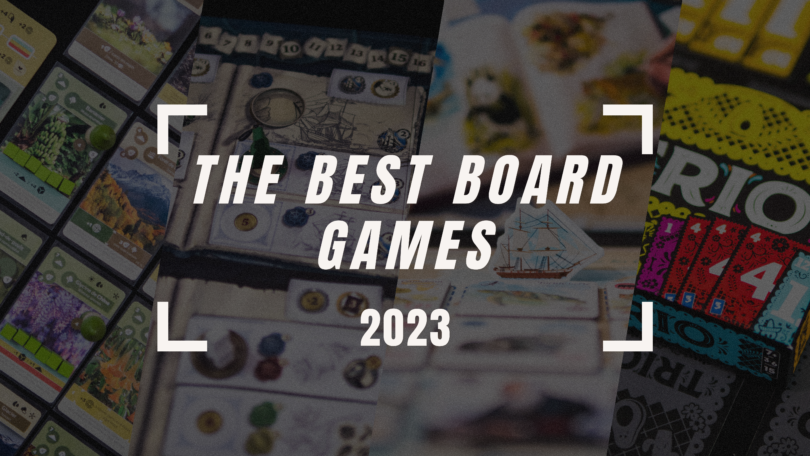Ready to discover the world of board games? Here are some must-haves to get started. These board games are perfect for beginners because they are simple, fun, and quick to learn. Feel free to explore and find the ones that suit you best! Opinions are subjective.
Sorted in no particular order:
On your turn, choose a card to reveal, either the low or high card in any player’s hand (including your own) or any face-down card on the table. Then start over. If both cards show the same number, continue your turn; if not, put the cards back where they came from and end your turn.
If you reveal three cards showing the same number, take those cards as a set in front of you. If you are the first player to collect three sets, you win, except that a player wins immediately if he collects the whole 7 or two sets that add to or subtract from 7, for example, 4 and 11.
By supporting the site, buy the game through my affiliate links. The price remains the same for you, but it allows me to continue to offer you quality free content:
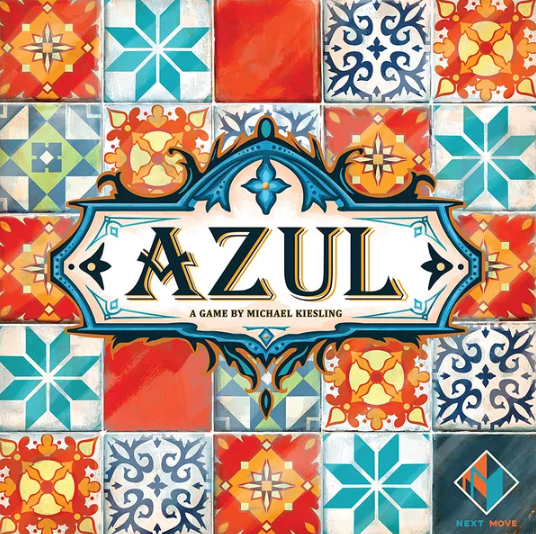
Azul
In the game Azul, players take turns drawing colored tiles from suppliers to place on their game board. Later in the game, players score points based on how well they placed their tiles to decorate the palace. Additional points are awarded for specific designs and complete sets; wasted supplies hurt the player’s score. The player with the most points at the end of the game wins.
By supporting the site, buy the game through my affiliate links. The price remains the same for you, but it allows me to continue to offer you quality free content:

Decrypto
In Decrypto, players compete in two teams, each trying to correctly interpret coded messages presented to them by their teammates while deciphering codes they intercept from the opposing team.
Specifically, each team has its own screen, and within that screen, they slide four cards into pockets numbered 1 through 4, allowing all members of the same team to see the words on those cards while hiding the words from the opposing team. In the first round, each team does the following: One team member takes a code card that shows three of the numbers 1 through 4 in a certain order, for example, 4-2-1. They then give a coded message that their teammates must use to guess that code. For example, if the team’s four words are “pig,” “candy,” “tent,” and “son,” then I can say “Sam-pink-striped” and hope that my teammates can correctly associate those words with 4-2-1. If they guess correctly, great; if not, we get a black fail mark.
Starting with the second round, one member of each team must again give a clue about their words to match a numbered code. If I get a 2-4-3, I can now say “sucker-prince-stakes.” The other team then tries to guess our numbered code. If they guess correctly, they get a white success mark; if not, my team must guess the number correctly or take a black fail mark. (Guessing correctly does nothing except avoid failure and give the opposing team information about what our hidden words might be.)
Rounds continue until a team collects either their second white mark (winning the game) or their second black mark (losing the game). Games typically last between 4 and 7 rounds. If no team has won after eight rounds, each team must then try to guess the other team’s words; The team that guesses the most words correctly wins.
By supporting the site, buy the game through my affiliate links. The price remains the same for you, but it allows me to continue to offer you quality free content:
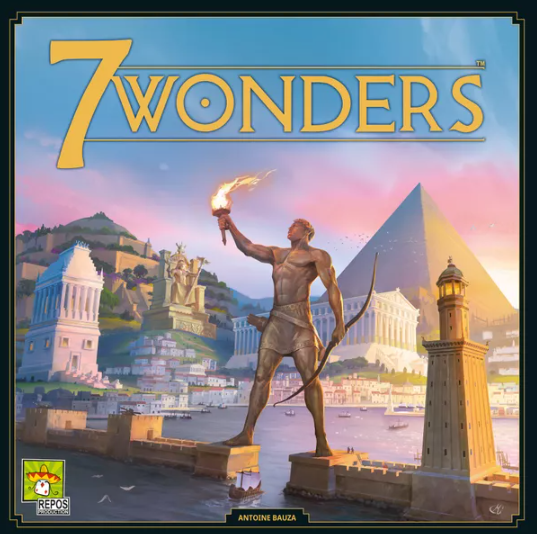
7 Wonders
The most awarded board game on the planet.
With over 30 international awards and over a million copies sold worldwide, 7 Wonders is an essential reference in modern board games.
7 Wonders is based on a simple and elegant mechanic (drafting) that allows up to 7 players to play without downtime. Players make their choices and apply them all at the same time. These choices are varied and their impact is real. Finally, the game is divided into 3 Ages that gradually increase the importance of these choices and therefore the tension of the game. The overall mechanics and the care given to the illustrations immerse the player in Antiquity and have contributed to the success of the game.
A game takes place in 3 rounds, called Ages, during which you play cards simultaneously, one at a time, to develop your City.
These cards represent the different buildings that you can build: resource producers, civil, commercial, military, scientific and guild structures.
At the end of each Age, you go to war against your closest neighbors. At the end of the 3 Ages, you add up all the victory points earned by your City, your wonders, your military prowess, and your treasure. The player with the highest score wins the game.
By supporting the site, buy the game through my affiliate links. The price remains the same for you, but it allows me to continue to offer you quality free content:
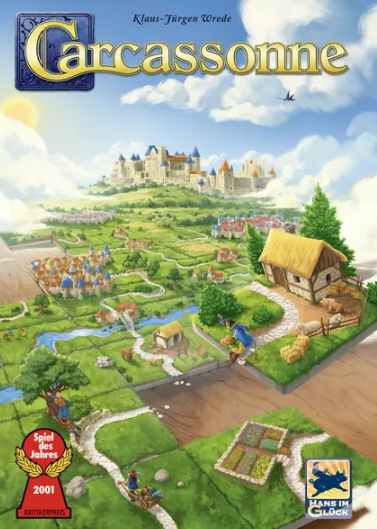
Carcassonne
Carcassonne is a tile-placement game in which players draw and place a tile with a piece of landscape from the south of France on it. The tile can represent a city, a road, a cloister, a meadow, or a combination of these, and it must be placed next to tiles that have already been played, such that cities are connected to cities, roads to roads, and so on. After placing a tile, the player can then decide to place one of his meeples on one of the areas on it: on the city as a knight, on the road as a brigand, on a cloister as a monk, or on the grass as a farmer. When that area is completed, that meeple earns points for its owner.
During a game of Carcassonne, players are faced with decisions such as: “Is it really worth placing my last meeple there?” » or “Should I use this tile to expand my city, or should I place it next to my opponent, making it harder for them to complete their project and score points?” Since players only place a single tile and have the option to place a meeple on it, turns move quickly even though it’s a game full of options and possibilities.
By supporting the site, buy the game through my affiliate links. The price remains the same for you, but it allows me to continue to offer you quality free content:
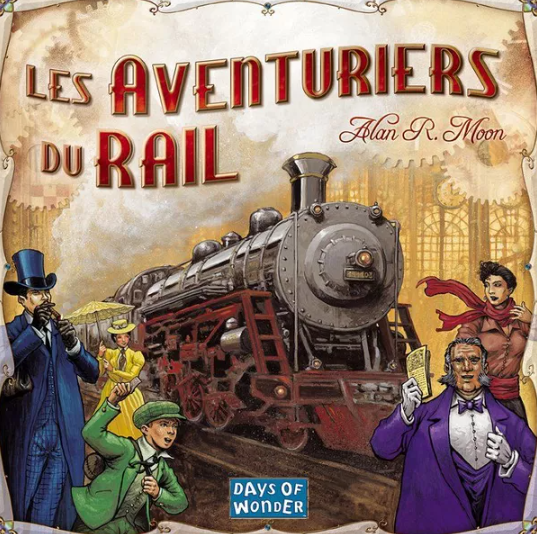
Ticket to ride
With simple and elegant gameplay, Ticket to Ride can be learned in less than 15 minutes. Players collect cards of different types of train cars that they then use to claim train routes across North America. The longer the routes, the more points they earn. Extra points are awarded to those who complete destination tickets—objective cards that connect distant cities—and to the player who builds the longest continuous route.
“The rules are simple enough to be written on a train ticket—each turn, you draw more cards, claim a route, or gain additional destination tickets,” says Ticket to Ride author Alan R. Moon. “The tension comes from being forced to balance greed—adding more cards to your hand—and fear—losing a critical route to a competitor.”
Ticket to Ride continues the Days of Wonder tradition of large-format board games with high-quality artwork and components, including: an oversized map of North America, 225 custom-molded train cars, 144 illustrated cards, and wooden score markers.
Since its launch and subsequent numerous awards, Ticket to Ride has become BoardGameGeek’s epitome of a “starter game” – simple enough to learn in minutes, and with enough action and tension to keep new players engaged and in the game for the duration.
By supporting the site, buy the game through my affiliate links. The price remains the same for you, but it allows me to continue to offer you quality free content:
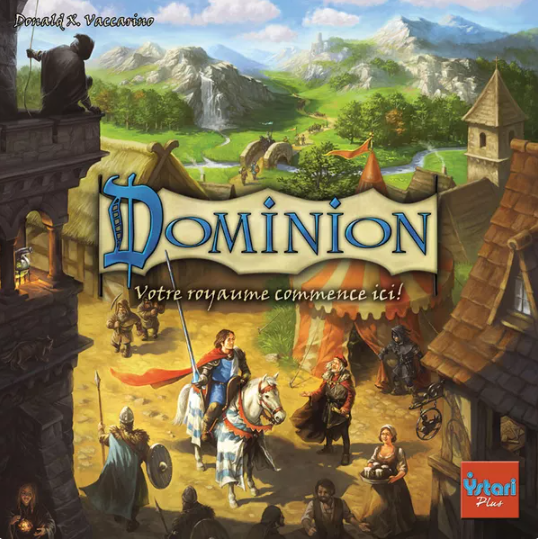
Dominion
In Dominion, each player starts with an identical, very small deck of cards. In the center of the table is a selection of other cards that players can “purchase” as they can afford. Through their selection of cards to purchase and how they play their hands when they draw them, players build their deck on the fly, trying to find the most efficient path to those precious victory points at the end of the game.
Dominion is not a CCG, but the game is similar to building and playing a CCG deck. The game comes with 500 cards. You select 10 of the 25 types of cards in the Realm to include in a given game, which allows for a huge amount of variety.
By supporting the site, buy the game through my affiliate links. The price remains the same for you, but it allows me to continue to offer you quality free content:
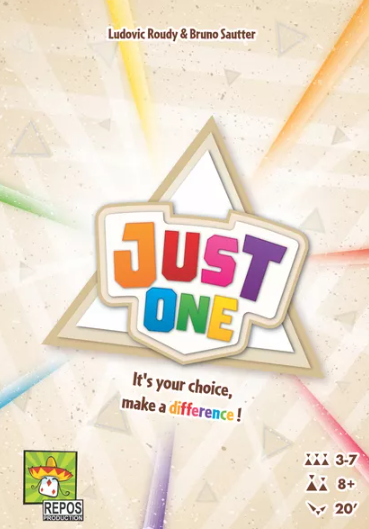
Just one
Just One is a cooperative game in which you play together to discover as many mystery words as possible. Find the best clue to help your teammate. Be unique, because all identical clues will be canceled!
A full game is played on 13 cards. The goal is to get a score as close as possible to 13. If the answer is correct, players score 1 point. If the answer is incorrect, they lose the current card as well as the top card of the deck. They therefore lose 2 points. If they do not answer, players only lose the current card, and therefore only 1 point.
The choice is yours – make the difference!
By supporting the site, buy the game through my affiliate links. The price remains the same for you, but it allows me to continue to offer you quality free content:
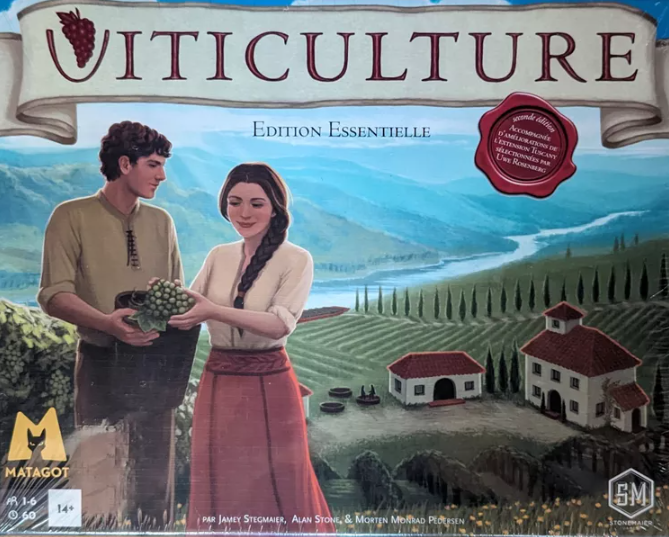
Viticulture
In Viticulture, players take on the role of rustic, pre-modern Tuscan residents who have inherited meager vineyards. They own a few plots of land, an old crushing shed, a tiny winery, and three workers. They all dream of being the first to call their winery a true success.
Players must determine how they want to distribute their workers throughout the year. Each season is different in a vineyard, so workers have different tasks to take care of in the summer and winter. There is competition for these tasks, and often the first worker to get to work has an advantage over the later workers.
Fortunately for vineyard owners, people love to visit vineyards, and it turns out that many of these visitors are willing to help out in the vineyard when they visit, provided you assign a worker to take care of them. Their visits (in the form of cards) are brief but can be very useful. With these workers and visitors, vineyard owners can expand their vineyards by building structures, planting vines, and fulfilling wine orders, working toward the goal of running the most successful winery in Tuscany.
Viticulture Essential Edition includes the Viticulture base game and some of the most popular modules from the original Tuscany expansion, including Mamas & Papas, Fields (formerly known as Properties), expanded and revised Visitors, and Automa cards for a solo variant, along with some minor rule changes.
By supporting the site, buy the game through my affiliate links. The price remains the same for you, but it allows me to continue to offer you quality free content:
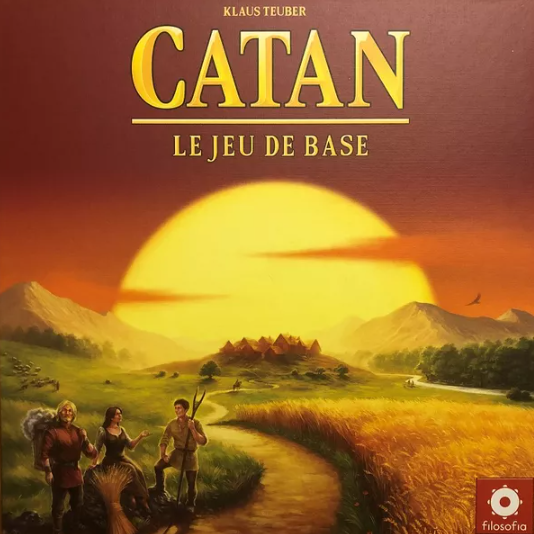
Catan
In CATAN (formerly Settlers of Catan), players attempt to dominate the island of Catan by building settlements, cities, and roads. Each turn, dice are rolled to determine the resources the island produces. Players build by spending resources (sheep, wheat, lumber, bricks, and ores) represented by these resource cards; each terrain type, except the unproductive desert, produces a specific resource: hills produce bricks, forests produce wood, mountains produce ores, fields produce wheat, and pastures produce sheep.
By supporting the site, buy the game through my affiliate links. The price remains the same for you, but it allows me to continue to offer you quality free content:
In Darwin’s Footsteps, players take on the role of young naturalists who have just arrived aboard the Beagle to help Charles Darwin complete his book On the Origin of Species. During this voyage, you will study animals, make cartographic surveys, publish your discoveries, and develop theories. Starting with the naturalist who controls the Darwin token, the naturalists take turns in a clockwise direction, completing these two steps in order:
Study an animal or draw inspiration from a character: Choose one of the three tiles facing the Beagle and place it on your naturalist’s notebook. This can be either an animal to study or a character from the Beagle’s previous voyage who will inspire you. Earn the bonuses depicted or any additional scoring bonuses triggered by the tile’s placement.
The Beagle’s Journey: After placing a tile on your notebook, move the Beagle forward as many spaces as the distance between the Beagle and the tile you just selected (1 to 3 spaces), then draw a new tile to replace the empty space on the journey board.
Your goal is to score more points than your opponents to determine who contributed the most to The Origin of Species.
By supporting the site, buy the game through my affiliate links. The price remains the same for you, but it allows me to continue to offer you quality free content:
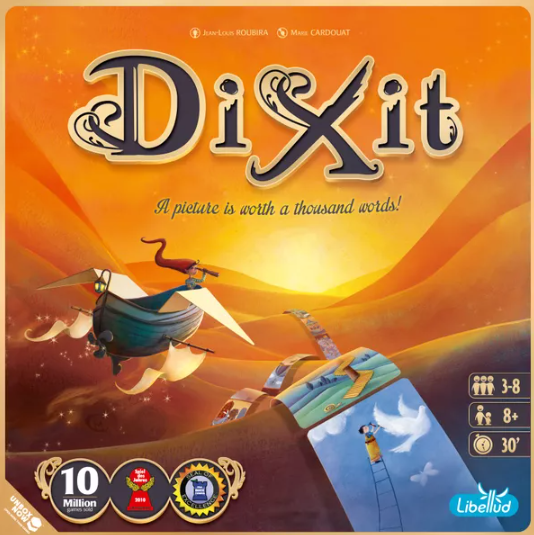
Dixit
In each round in Dixit, one player is the storyteller, chooses one of the six cards in his hand, then composes a sentence based on the image on that card and says it out loud without showing the card to the other players. Each other player then selects the card in his hand that best matches the sentence and gives the selected card to the storyteller, without showing it to anyone else.
The storyteller shuffles his card with all the cards received, then reveals all of these cards. Each player other than the storyteller then secretly guesses which card belongs to the storyteller. If no one or everyone guesses the correct card, the storyteller scores 0 points and each other player scores 2 points. Otherwise, the storyteller and the person who guessed the correct answer score 3 points. In addition, non-storyteller players score 1 point for each vote their card received.
The game ends when the deck is empty or if a player has scored at least 30 points. In both cases, the player with the most points wins.
By supporting the site, buy the game through my affiliate links. The price remains the same for you, but it allows me to continue to offer you quality free content:


